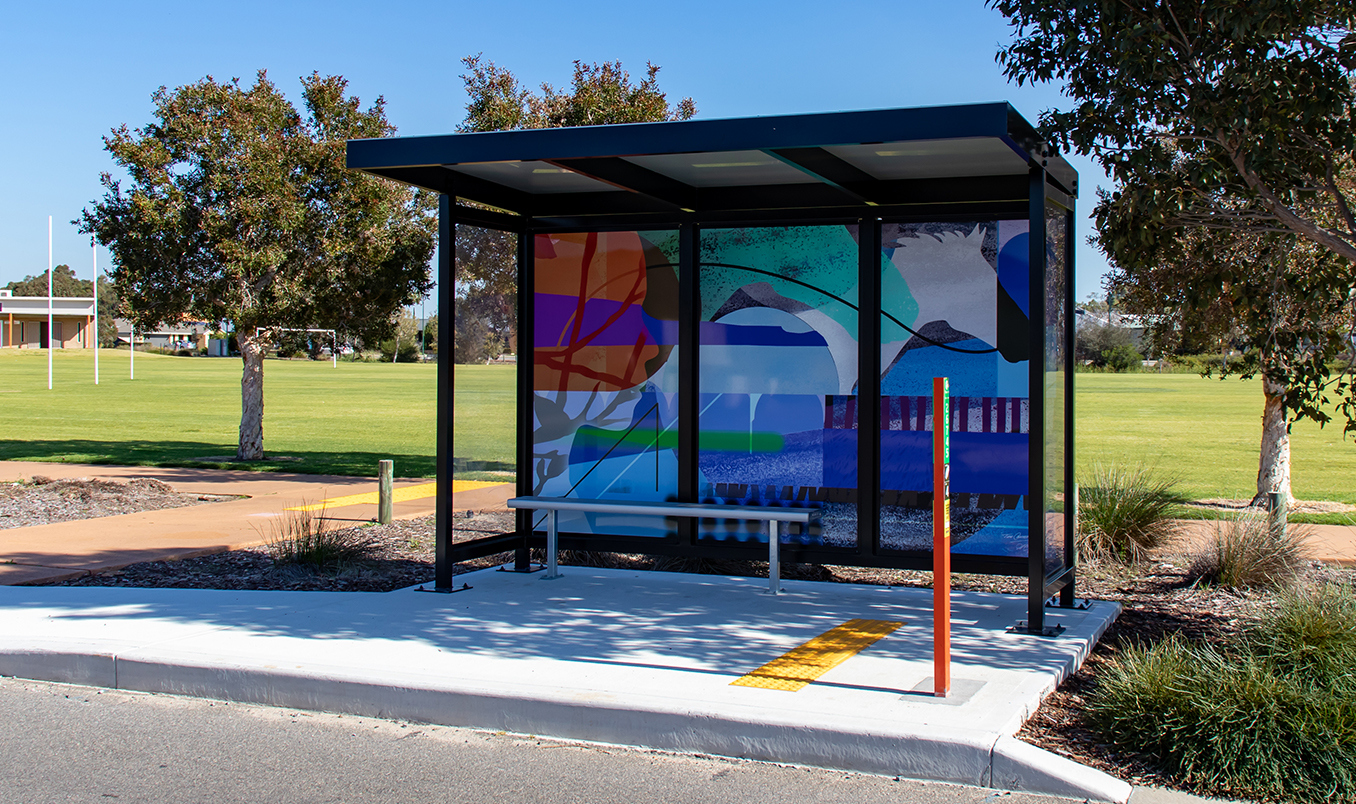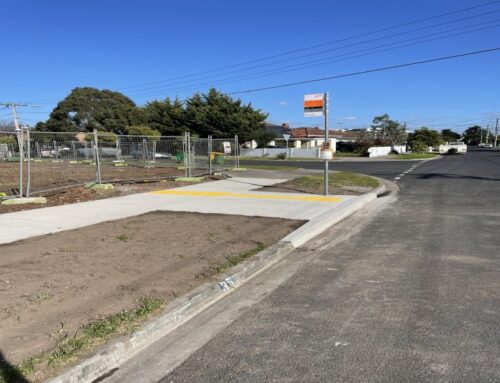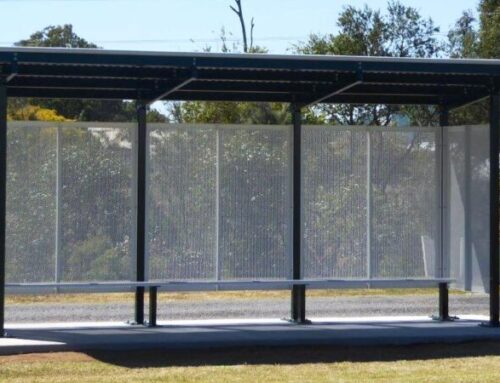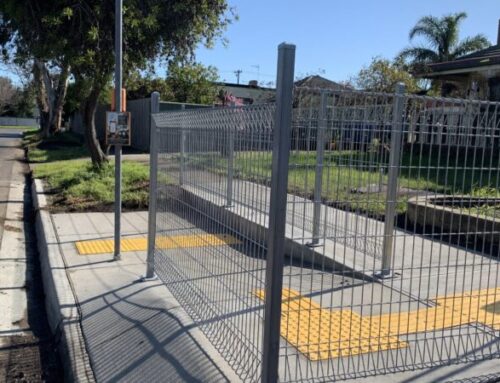In a time defined by escalating environmental worries and a pressing requirement for conscientious resource utilisation, the importance of sustainable construction methods has never been more emphasised. These practices represent a paradigm shift in how we conceive, design, and build structures, emphasising a harmonious coexistence between human endeavours and the natural world. By prioritising efficiency, resource conservation, and environmental stewardship, sustainable construction transcends the traditional confines of architecture and engineering, becoming a pivotal force in shaping a more resilient, ecologically balanced, and socially equitable future. This introductory overview delves into the multifaceted importance of sustainable construction, shedding light on its profound implications for the environment, economy, and the well-being of communities worldwide.
Nestled along the southern coast of Australia, Melbourne stands as a shining beacon of urban ingenuity and environmental consciousness. Renowned for its cosmopolitan allure, this vibrant metropolis has distinguished itself through a steadfast commitment to green initiatives and sustainability. In the heart of Victoria, Melbourne’s cityscape seamlessly blends with its natural surroundings, embodying a harmonious coexistence between urban development and the lush, sprawling landscapes that envelop it. This dedication to ecological balance and responsible urban planning has propelled Melbourne to the forefront of global cities striving for a more sustainable future. From innovative architectural designs to community-driven initiatives, Melbourne’s journey towards sustainability is an inspiring testament to the transformative power of collective environmental stewardship. In this exploration, we unveil the intricacies of Melbourne’s green revolution, uncovering the practises and projects that have solidified its reputation as a paragon of sustainable urban living.
Significance of Sustainable Bus Stop Construction in Urban Planning
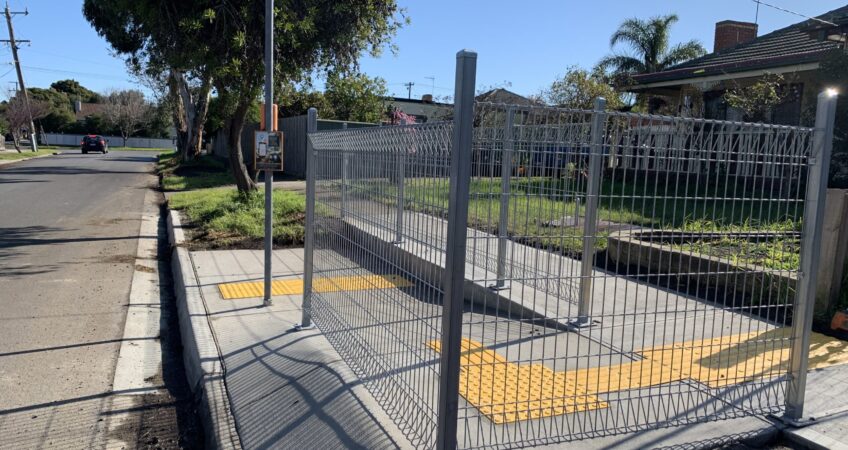
Sustainable bus stop construction is pivotal in the overarching framework of urban planning, contributing to many critical aspects shaping cities’ livability, functionality, and environmental resilience. Outlined below are crucial aspects underscoring the importance of incorporating sustainable principles in the construction of bus stops within urban planning:
- Enhanced Public Transit Accessibility: Sustainable bus stops ensure that public transportation services are easily accessible to a diverse range of residents, regardless of age, mobility, or socioeconomic status. This inclusivity promotes equity and reduces reliance on individual vehicles.
- Reduced Environmental Impact: Employing sustainable construction practices minimises the ecological footprint of building and maintaining bus stops. This includes using eco-friendly materials, energy-efficient design, and water conservation measures.
- Encouraging Modal Shifts: Well-constructed bus stops are crucial nodes within a city’s public transit network. By providing convenient, comfortable, and reliable transit options, sustainable bus stops encourage individuals to opt for public transportation over private vehicles, thus reducing traffic congestion and lowering emissions.
- Improved Urban Aesthetics: Thoughtfully designed, aesthetically pleasing bus stops contribute to the overall visual appeal of a city. This enhances the urban environment for residents and visitors and fosters a sense of civic pride and community identity.
- Facilitating Multi-Modal Transportation: Sustainable bus stops often incorporate amenities for cyclists, pedestrians, and other non-motorised forms of transportation. This integrated approach encourages a seamless transition between different modes of travel, promoting a holistic, interconnected transportation system.
- Resilience to Climate Change: Sustainable bus stop designs factor in climate considerations, such as shelter from extreme weather events and incorporating green infrastructure to mitigate heat island effects. This makes the city’s transit system more resilient in changing environmental conditions.
- Economic Benefits: Sustainable bus stop construction can yield long-term economic advantages. Lower operational costs due to energy-efficient features and reduced maintenance needs contribute to a more financially sustainable public transit system.
- Community Engagement and Well-Being: Engaging the community in the planning and design of bus stops fosters a sense of ownership and involvement. Additionally, well-designed bus stops with amenities like seating, lighting, and green spaces create comfortable spaces that enhance the overall well-being of waiting passengers.
Sustainable bus stop construction is an integral component of urban planning that bolsters public transportation infrastructure and contributes to a more resilient, equitable, and environmentally conscious urban landscape. By prioritising sustainability in this critical aspect of urban design, cities like Melbourne exemplify a forward-thinking approach to urban development that benefits both present and future generations.
Eco-Friendly Materials Selection
Eco-Friendly Materials
Selecting eco-friendly materials for bus stop construction is crucial to ensuring sustainable urban development in Melbourne. The city’s commitment to green initiatives extends to its public infrastructure, and choosing environmentally responsible materials aligns with this vision. Here are some key considerations for eco-friendly materials selection in bus stop construction:
- Recycled Steel and Aluminium: Utilising recycled steel and aluminium for structural components provides strength and durability while reducing the demand for virgin metals. These materials can be sourced from scrap metal yards or certified suppliers.
- Sustainably Sourced Timber: Selecting timber certified by organisations such as the Forest Stewardship Council (FSC) guarantees that the wood originates from forests managed in an environmentally responsible manner. Timber can be used for various elements, such as benches, shelters, and decorative features.
- Recycled Glass and Plastic: Incorporating recycled glass for panels or recycled plastic for seating and non-structural elements reduces the environmental impact of conventional manufacturing processes.
- Bamboo Composites: Bamboo is a rapidly renewable resource that can be used to create composite materials for various applications, including cladding, seating, and decorative elements.
- Low VOC Paints and Finishes: Choosing paints, stains, and finishes with low or zero volatile organic compound (VOC) content improves indoor air quality and reduces harmful emissions during application and curing.
- Concrete Alternatives: Considering alternatives like recycled concrete or fly ash-based concrete reduces the environmental impact of traditional cement production.
- Green Roofing Materials: Utilising green roofing systems with materials like recycled rubber or vegetative plantings helps mitigate stormwater runoff, provides insulation, and contributes to urban biodiversity.
- Permeable Paving Materials: Using porous materials for walkways and surrounding areas allows rainwater to infiltrate the ground, reducing runoff and the burden on stormwater systems.
- Natural Stone and Pavers: Selecting locally sourced natural stone or permeable pavers for ground surfaces helps minimise transportation emissions and supports using indigenous materials.
- Energy-Efficient Glazing and Insulation: Choosing glazing with low-emissivity coatings and high-performance insulation materials enhances energy efficiency, reducing heating and cooling demands within shelters.
- Photovoltaic (PV) Panels: Integrating solar panels into shelters or adjacent structures can harness renewable energy to power lighting or other amenities, further reducing the carbon footprint of the bus stop.
By incorporating these eco-friendly materials into bus stop construction projects, Melbourne can exemplify a sustainable and forward-thinking approach to urban infrastructure. This aligns with the city’s green initiatives and contributes to a more resilient, environmentally conscious, and aesthetically pleasing public transportation system.
Benefits Of Using Eco-Friendly Materials In Bus Stop Construction
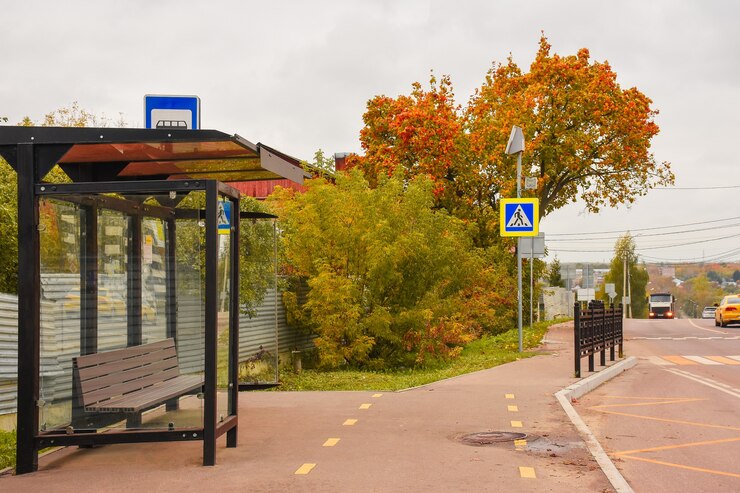
Using eco-friendly materials in bus stop construction provides many benefits beyond the immediate project. These advantages encompass environmental, social, and economic aspects, making them a valuable choice for sustainable urban development. Here are the key benefits:
- Reduced Environmental Impact: Eco-friendly materials are frequently sourced from renewable or recycled sources, mitigating the depletion of natural resources and decreasing environmental harm linked to extraction and manufacturing processes.
- Lower Carbon Footprint: Producing eco-friendly materials typically involves fewer greenhouse gas emissions than conventional alternatives. As a result, this leads to a reduced carbon footprint for the entire construction process.
- Resource Conservation: By utilising recycled and renewable materials, there is a reduction in the demand for virgin resources. This conserves natural resources and helps manage waste effectively.
- Improved Indoor Air Quality: Materials that are environmentally friendly generally contain reduced levels of harmful chemicals and volatile organic compounds (VOCs). This results in better indoor air quality, which is crucial for the health and well-being of bus stop users.
- Energy Efficiency: Many eco-friendly materials have enhanced insulation properties or are designed to optimise energy performance. This can reduce energy consumption for heating, cooling, and lighting within the bus stop.
- Enhanced Durability and Longevity: Sustainable materials are frequently selected for their robustness and ability to withstand wear and tear. This can lead to longer lifespans for bus stop structures, reducing the need for frequent maintenance or replacement.
- Stimulates Green Innovation: The demand for eco-friendly materials encourages research and development in sustainable technologies and manufacturing processes. This fosters innovation and drives the industry towards even more environmentally conscious practices.
- Supports Local Economies: Choosing locally sourced eco-friendly materials supports regional economies, reduces the need for long-distance transportation, and strengthens local supply chains.
- Positive Public Perception: Using eco-friendly materials in construction projects demonstrates a commitment to sustainability and environmental stewardship. This can enhance public perception and generate goodwill among community members.
- Compliance with Green Building Standards: Many eco-friendly materials meet or exceed the criteria set by green building certification programmes, such as LEED (Leadership in Energy and Environmental Design) or BREEAM (Building Research Establishment Environmental Assessment Method). This can lead to recognition and certification for the project.
- Resilience to Climate Impacts: Certain sustainable materials are engineered to exhibit greater resilience to severe weather conditions, a crucial aspect given the escalating challenges of climate change.
Through giving preference to sustainable materials in bus stop construction, cities like Melbourne can take significant steps towards establishing a more environmentally friendly and robust urban environment. This benefits the immediate community and contributes to a global effort towards a greener future.
Energy-Efficient Design
A remarkable transformation is underway in the bustling heart of Melbourne, where urban innovation meets environmental consciousness. This vibrant metropolis, renowned for its dynamic urban fabric, spearheads a visionary approach to public infrastructure: energy-efficient design principles in bus stop construction. With a commitment to sustainability woven into its urban DNA, Melbourne stands as a beacon of progressive urban planning. By integrating cutting-edge energy-efficient design principles into the construction of its bus stops, the city is revolutionising its public transit system and setting a global benchmark for responsible urban development. In this exploration, we delve into the ingenious principles underpinning Melbourne’s sustainable bus stop revolution, uncovering how they reshape the city’s urban landscape and foster a more sustainable, resilient, and ecologically harmonious future.
Solar-Powered Lighting And Its Impact On Energy Consumption
In the radiant city of Melbourne, solar-powered lighting stands as a beacon of sustainable innovation, illuminating a path towards a greener future. Embracing the bountiful sunlight that graces this metropolis, integrating solar technology into public infrastructure represents a transformative leap in energy efficiency. By harnessing the sun’s power to illuminate its streets, Melbourne reduces its reliance on conventional energy sources and significantly strides towards a more sustainable, resilient, and economically viable urban environment.
Adopting solar-powered lighting systems in Melbourne’s urban landscape has profound implications for energy consumption. Traditionally, public lighting has significantly contributed to a city’s energy demands, drawing heavily from the electrical grid. By employing solar panels to capture and convert sunlight into electricity, Melbourne’s bus stops now have the capacity to generate their own clean energy. This alleviates the strain on the conventional power grid and curtails the associated greenhouse gas emissions, fostering a more environmentally responsible city.
Furthermore, the impact of solar-powered lighting extends beyond its immediate energy-saving potential. Melbourne’s efforts to decrease its dependency on fossil fuels for generating electricity lead to a decline in air pollutants and greenhouse gas emissions. This, in turn, enhances air quality and mitigates the city’s overall carbon footprint, aligning with global efforts to combat climate change.
The economic benefits of solar-powered lighting are also noteworthy. By generating its electricity, Melbourne’s bus stops stand to lower their operational costs over time significantly. This reduction in energy expenditure translates into financial savings for the city and allows for reinvestment in other vital urban initiatives.
Melbourne embraces solar-powered lighting and demonstrates a forward-thinking commitment to sustainable urban development. By harnessing the sun’s boundless energy, the city paves the way for a brighter, more sustainable future, where energy-efficient technologies and responsible resource management are central to shaping the urban landscape. This paradigm shift exemplifies Melbourne’s dedication to environmental stewardship. It inspires cities worldwide, beckoning them to follow suit on the path towards a more sustainable and resilient urban future.
Green Roof and Vertical Gardens
The city redefines public infrastructure by incorporating green roofs and vertical gardens, blurring the lines between urban development and natural ecosystems. This innovative fusion of greenery and architecture enriches the visual tapestry of Melbourne’s streets and embodies a profound commitment to sustainability, resilience, and ecological balance.
Green roofs, gracing the summits of bus shelters serve as living canvases of vegetation. They are meticulously designed to flourish amidst the urban jungle, offering an array of benefits to both the environment and the community. These verdant crowns act as natural insulators, regulating the temperature within the bus stop. In Melbourne’s temperate climate, this translates to more excellent shelters in the scorching summer and warmer refuge in the brisk winter months. Additionally, the lush foliage of green roofs absorbs rainfall, reducing stormwater runoff and mitigating the strain on city drainage systems.
Vertical gardens adorning the sides of bus stops bring life to otherwise utilitarian structures.
These vibrant tapestries of greenery ascend the walls, creating vertical oases within the urban environment. Beyond their aesthetic appeal, vertical gardens are pivotal in urban biodiversity, providing habitats for birds, insects, and other small creatures. In addition, they enhance air quality by absorbing pollutants and releasing oxygen, thereby creating a healthier microclimate for waiting passengers.
Moreover, both green roofs and vertical gardens act as natural carbon sinks, sequestering carbon dioxide and offsetting the emissions generated by urban activities. This eco-friendly infrastructure supports the city’s wider initiatives to address climate change and diminish its environmental impact.
Integrating green roofs and vertical gardens in bus stop design epitomises Melbourne’s dedication to sustainable urban development. It reimagines the role of public infrastructure and showcases the city’s commitment to fostering a harmonious coexistence between urban life and the natural world. As these living installations flourish amidst the concrete and steel of Melbourne’s streets, they serve as a testament to the boundless potential of eco-centric design in transforming cities into thriving, green havens for all to enjoy.
Accessibility and Inclusivity

In Melbourne, the commitment to inclusivity and accessibility is woven into the very fabric of urban planning, extending to every facet of public infrastructure, including bus stop construction. The city’s approach goes beyond mere compliance with regulations; it aspires to create welcoming, functional, and accommodating spaces for all community members, regardless of their age, mobility, or abilities. This dedication to inclusivity aligns with global standards and sets a shining example for cities worldwide.
Melbourne’s bus stop construction lies in a deep consideration for universal design principles. Ramps, strategically positioned at key access points, ensure smooth transitions for those with mobility aids, such as wheelchairs or walkers. Tactile indicators guide individuals with visual impairments, providing essential cues and information about their surroundings. These measures, seamlessly integrated into the design, create a safer, more navigable environment for everyone.
Seating options cater to diverse needs, offering choices that accommodate various comfort preferences, including traditional seating, benches with backrests, and seating with armrests for added support. The availability of different seating options acknowledges that individual tastes and requirements vary, fostering a more inclusive and user-friendly experience.
Moreover, shelters have ample space to accommodate individuals with mobility aids comfortably. This ensures unrestricted movement within the shelter and provides a sense of independence and dignity to those who rely on mobility devices.
Equally important is considering real-time information displays and audio announcements, providing crucial updates to passengers with visual or auditory impairments. These features ensure everyone can access timely and relevant information about bus arrivals and departures.
Furthermore, Melbourne’s bus stops are equipped with adequate lighting, creating a well-illuminated environment that enhances safety and security, particularly for those with visual impairments. Clear signage with high contrast and easily readable fonts further aids in wayfinding and information dissemination.
In prioritising accessibility and inclusivity in bus stop construction, Melbourne demonstrates its unwavering commitment to creating a city that is accessible and welcoming for all. This approach not only empowers individuals with disabilities but also fosters a sense of belonging and community among all residents and visitors. By championing inclusivity, Melbourne exemplifies a forward-thinking urban model that sets the standard for cities worldwide, inspiring them to create environments for everyone.
Rainwater Harvesting and Drainage Systems
Rainwater harvesting systems are vanguards of sustainability, embodying a transformative approach to water resource management. These systems are ingeniously designed to capture and store rainwater from rooftops and other impervious surfaces, converting a fleeting natural phenomenon into a valuable and renewable resource. By harnessing this precipitation, rainwater harvesting mitigates the strain on traditional water sources, reducing reliance on municipal supplies or groundwater reserves. This practice holds profound implications for sustainability, as it conserves precious freshwater resources and curtails energy-intensive water treatment processes. Moreover, when collected and utilised for non-potable purposes like irrigation, flushing toilets, or washing, rainwater significantly reduces the demand for potable water for these tasks. This, in turn, translates to reduced energy consumption and lower greenhouse gas emissions associated with water treatment and distribution. As a cornerstone of sustainable water management, rainwater harvesting exemplifies a harmonious interplay between human needs and ecological preservation, offering a tangible pathway towards a more resilient and resource-efficient future.
The Benefits Of Efficient Drainage Systems In Bus Stops
Efficient rainwater harvesting and drainage systems are integral to Melbourne’s sustainable bus stop construction. These systems provide a diverse array of advantages that enhance the overall resilience, sustainability, and functionality of the city’s public transportation infrastructure.
- Reduced Pressure on Municipal Water Supply: Rainwater harvesting alleviates the city’s municipal water supply demand for tasks like irrigation and cleaning. This conserves potable water resources for essential uses and helps mitigate water scarcity concerns.
- Minimised Stormwater Runoff: Effective drainage systems prevent excessive stormwater runoff, which can lead to flooding, erosion, and water pollution. Bus stops help maintain a balanced water cycle within the urban environment by capturing and managing rainwater.
- Lowered Flood Risk: Proper drainage systems mitigate the risk of flooding during heavy rainfall events. This safeguards both the bus stop infrastructure and the safety of waiting passengers.
- Improved Water Quality: Rainwater harvesting systems filter and purify collected rainwater, reducing pollutants and contaminants. This leads to purified water suitable for non-drinking purposes like irrigating plants or cleaning surfaces.
- Enhanced Soil Moisture and Landscaping Sustainability: Harvested rainwater can be used for landscaping around bus stops, providing a sustainable water source to nourish plants and greenery. This supports urban biodiversity and contributes to a more aesthetically pleasing streetscape.
- Energy Conservation: By reducing the need for energy-intensive water treatment processes for non-potable uses, rainwater harvesting lowers overall energy consumption associated with water supply and treatment.
- Cost Savings: Utilising harvested rainwater for non-potable purposes can lead to significant cost savings for maintenance and operational activities, particularly in regions where water is expensive or scarce.
- Climate Resilience: Rainwater harvesting and efficient drainage contribute to the overall resilience of bus stops against extreme weather events, helping to maintain functionality and safety even in adverse conditions.
- Community Engagement and Education: Implementing visible rainwater harvesting and drainage systems in bus stops provides an opportunity for public education and awareness. It encourages the community to learn about sustainable water practices and their benefits.
- Demonstration of Sustainable Practises: Melbourne’s commitment to rainwater harvesting and efficient drainage is a powerful example for other cities and communities. It showcases the feasibility and advantages of incorporating these systems into urban infrastructure projects.
By prioritising rainwater harvesting and efficient drainage systems in bus stop construction, Melbourne underscores its dedication to sustainable urban development. These systems enhance the functionality and resilience of bus stops and contribute to a more water-conscious and environmentally responsible cityscape. In doing so, Melbourne sets a standard for cities worldwide, inspiring them to integrate similar practices into their urban planning initiatives.
Community Engagement and Education
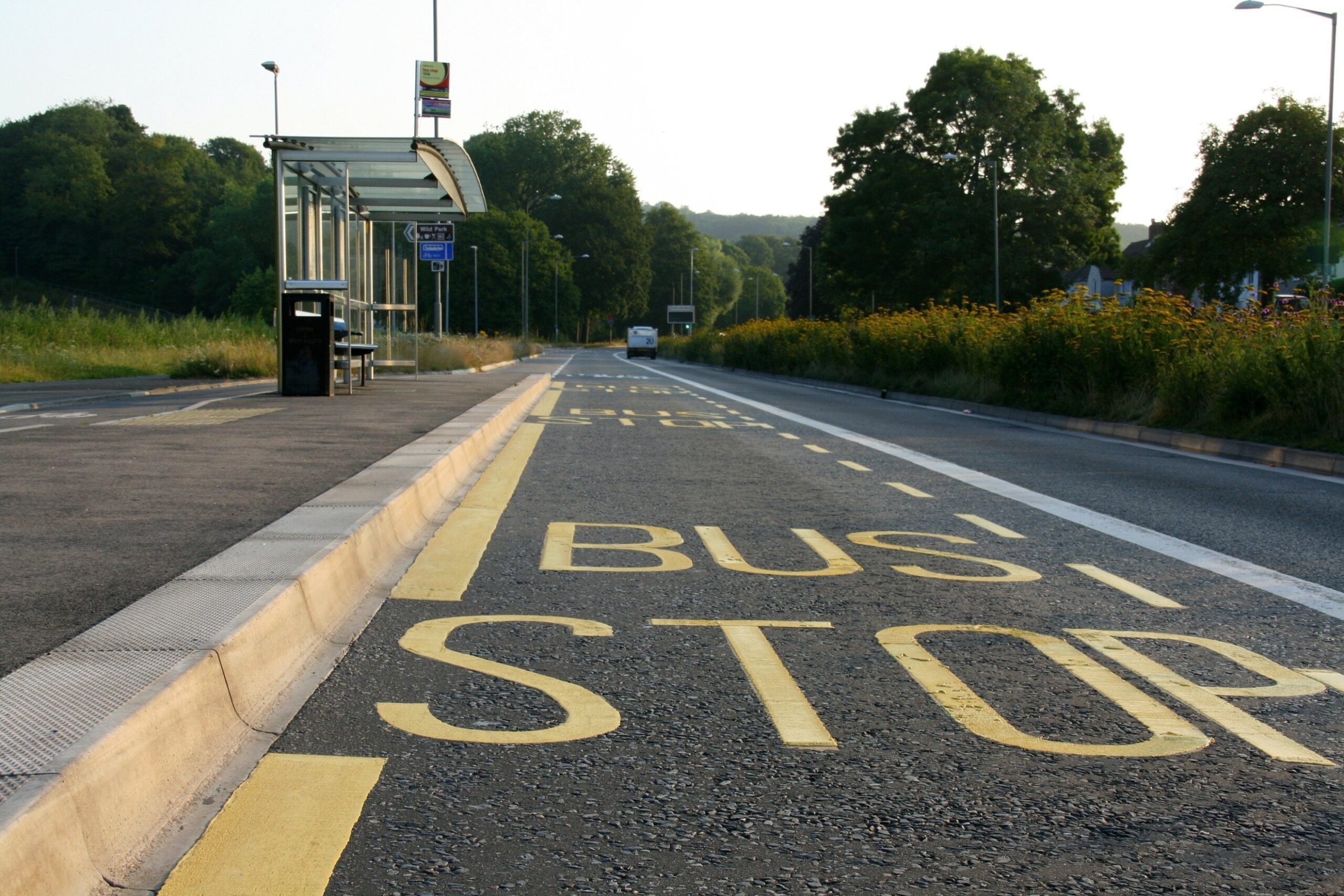
In Melbourne, community engagement and education programmes related to bus stop sustainability play a pivotal role in fostering a culture of environmental consciousness and responsible urban development. These initiatives aim to empower residents, commuters, and stakeholders with the knowledge and tools to actively participate in building a more sustainable and resilient city. Here are some essential community engagement and education programmes in Melbourne focused on bus stop sustainability:
- Greening our City Workshops: These workshops educate community members about the benefits of green infrastructure, including green roofs, vertical gardens, and rainwater harvesting. Participants learn how these features are integrated into bus stop construction and contribute to a more sustainable urban environment.
- Sustainable Transport Forums: These forums bring together experts, community leaders, and residents to discuss sustainable transportation options, including bus stops. Topics may include accessibility, energy efficiency, and the role of public transportation in reducing emissions.
- Youth Environmental Education Programmes: Melbourne’s youth are engaged through school-based programmes focusing on sustainable urban development, including bus stop design and construction. These programmes promote awareness and action among the next generation of city leaders.
- Public Information Campaigns: Public awareness campaigns disseminate information about the eco-friendly features incorporated into bus stop design. These campaigns may include brochures, informational signs, and online resources to educate the broader community.
- Guided Tours of Sustainable Bus Stops: Melbourne offers guided tours of innovative and sustainable bus stops to showcase eco-friendly elements and explain how they contribute to a more sustainable urban environment.
- Community Design Workshops: Residents are invited to participate in workshops encouraging their input and ideas for bus stop design and sustainability features. This collaborative approach empowers the community to be part of the decision-making process.
- Partnerships with Local Schools and Universities: Melbourne collaborates with educational institutions to develop curriculum and research projects on bus stop sustainability. This fosters a deeper understanding of sustainable urban development among students and researchers.
- Online Resources and Webinars: The city provides online resources, webinars, and educational materials on bus stop sustainability, accessible to residents, students, and professionals interested in sustainable urban development.
- Demonstration Projects: Melbourne showcases pilot projects incorporating sustainable features in bus stop design. These projects are tangible examples of how eco-friendly elements can be integrated into public infrastructure.
By engaging the community and providing educational opportunities, Melbourne cultivates a sense of ownership and responsibility for the city’s sustainability initiatives. These programmes empower individuals to shape a more environmentally conscious and resilient urban environment actively, ultimately contributing to the city’s broader vision of a sustainable future.
Maintenance and Long-Term Sustainability
The Importance Of Regular Maintenance For Sustainable Bus Stops
In Melbourne, a city renowned for its commitment to sustainable urban development, regular maintenance of bus stops is a cornerstone of responsible infrastructure management. This practice ensures that these vital transit hubs function optimally, effectively contributing to the city’s sustainability goals. Here are several key reasons why regular maintenance is paramount for sustainable bus stops in Melbourne:
- Preservation of Eco-Friendly Features: Sustainable bus stops in Melbourne often incorporate innovative features like green roofs, solar panels, and rainwater harvesting systems. Regular maintenance safeguards the integrity of these elements, allowing them to continue operating at peak efficiency and contributing to the city’s eco-conscious initiatives.
- Prevention of Deterioration and Damage: Melbourne’s diverse climate and urban environment expose bus stops to various environmental stressors. Regular maintenance helps promptly identify and address signs of wear and tear, preventing minor issues from escalating into more extensive and costly repairs.
- Optimising Energy Efficiency: Melbourne’s bus stops may employ solar-powered lighting and other energy-efficient technologies. Consistent upkeep guarantees optimal performance of these systems, leading to lower energy usage and a reduced environmental impact for the city.
- Ensuring Safety and Accessibility: Well-maintained bus stops guarantee safe and accessible spaces for all commuters, including those with mobility challenges. Clear pathways, functional seating, and features like ramps and tactile indicators are crucial components that require consistent upkeep.
- Mitigating Water Runoff Issues: Bus stops incorporating rainwater harvesting and drainage systems rely on proper maintenance to prevent blockages or clogs. Systems that receive proper maintenance guarantee effective water capture and drainage, thereby lowering the likelihood of flooding and erosion in the nearby area.
- Prolonging Lifespan and Cost-Efficiency: Regular maintenance helps extend the lifespan of bus stop infrastructure, reducing the need for premature replacements. This leads to long-term cost savings for the city, aligning with Melbourne’s sustainable financial model.
- Enhancing Urban Aesthetics: Well-maintained bus stops contribute to the visual appeal of Melbourne’s urban landscape. Clean, attractive features provide a positive experience for waiting passengers and foster a sense of civic pride and community engagement.
- Compliance with Sustainability Standards: Many of Melbourne’s bus stops are designed to meet specific green building or sustainability certifications. Regular maintenance ensures these standards are consistently met, reinforcing the city’s commitment to sustainable urban development.
Regular maintenance is an indispensable practice in sustaining the environmental, social, and economic benefits of bus stops designed for sustainability in Melbourne. Through this proactive approach, the city protects its investments in green infrastructure and sets a high standard for responsible urban development, benefiting communities and the environment in tandem.
Tips And Strategies For The Long-Term Sustainability Of Bus Stop Projects
Ensuring the long-term sustainability of bus stop projects in Melbourne requires careful planning, ongoing maintenance, and community engagement. Here are some tips and strategies to promote the longevity and effectiveness of sustainable bus stops in the city:
- Robust Design and Quality Materials: Begin with a well-thought-out and resilient design considering climate, usage patterns, and local conditions. Opt for premium, long-lasting materials capable of withstanding the demands of urban settings.
- Life Cycle Cost Analysis: Perform an in-depth cost assessment to assess the enduring financial impact of different design options. This helps identify cost-effective and sustainable solutions over the project’s lifespan.
- Regular Maintenance and Inspections: Establish a routine maintenance schedule to ensure bus stops remain in good condition. Conduct regular inspections to promptly identify and address any issues, preventing minor problems from becoming more extensive and expensive.
- Community Engagement and Education: Connect with the community to promote awareness of the eco-friendly aspects of bus stops. Inform residents about the advantages of sustainable features such as green roofs, solar panels, and rainwater harvesting systems.
- Partnerships with Local Organisations: Collaborate with local environmental and community organisations to implement educational programmes and community clean-up initiatives around bus stops. This fosters a sense of ownership and pride in the community.
- Innovative Technologies and Materials: Stay updated with the latest sustainable technologies and materials advancements. Consider integrating innovations that may enhance the efficiency and longevity of bus stops.
- Adaptability to Future Needs: Design bus stops with flexibility in mind, allowing for potential future upgrades or modifications to accommodate changing technology, user needs, or sustainability standards.
- Regular Data Collection and Analysis: Collect data on bus stop usage, maintenance needs, and the performance of sustainability features. Analyse this data to make informed decisions about adjustments or improvements.
- Resilience Planning for Extreme Weather Events: Design bus stops to be resilient to extreme weather conditions, such as heavy rainfall, strong winds, and high temperatures. Implement features like reinforced shelters, proper drainage systems, and durable materials.
- Energy and Water Efficiency Measures: Implement energy-saving technologies like LED lighting, motion sensors, and water-efficient features like low-flow faucets and rainwater harvesting systems. These measures reduce operational costs and environmental impact.
- Monitoring and Reporting: Establish a system for ongoing monitoring and reporting on the sustainability performance of bus stops. This can include metrics like energy usage, water conservation, and maintenance activities.
- Regular Stakeholder Engagement: Maintain open lines of communication with stakeholders, including local government, public transit agencies, and the community. Seek feedback on the performance of bus stops and make adjustments as needed.
By implementing these tips and strategies, Melbourne can ensure that its bus stop projects continue to serve as exemplars of sustainability, contributing to a more resilient, environmentally friendly, and user-centric urban environment for years to come.
Sustainable bus stops are beacons of progressive urban planning and environmental stewardship in the vibrant tapestry of Melbourne’s urban landscape. With a strategic fusion of innovative design, community engagement, and ongoing maintenance, these transit hubs embody a vision of a greener, more resilient future. Through eco-friendly features like green roofs, solar panels, and rainwater harvesting systems, Melbourne showcases a commitment to resource efficiency and environmental consciousness. As these sustainable bus stops continue to flourish amidst the hustle and bustle of the city, they serve as a testament to the transformative power of sustainable urban development. By prioritising long-term sustainability, Melbourne sets a standard for cities worldwide and lays the foundation for a more inclusive, environmentally responsible, and livable urban environment for future generations.

